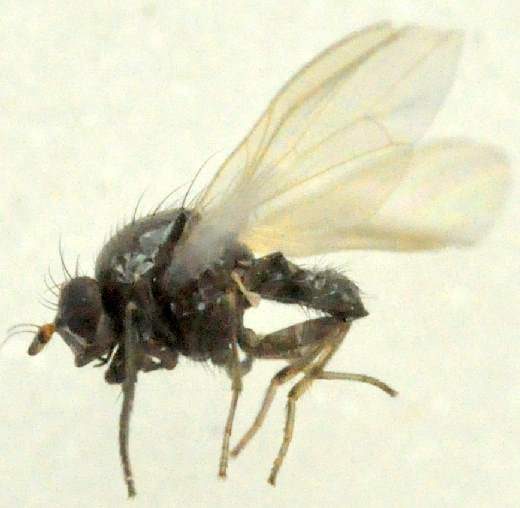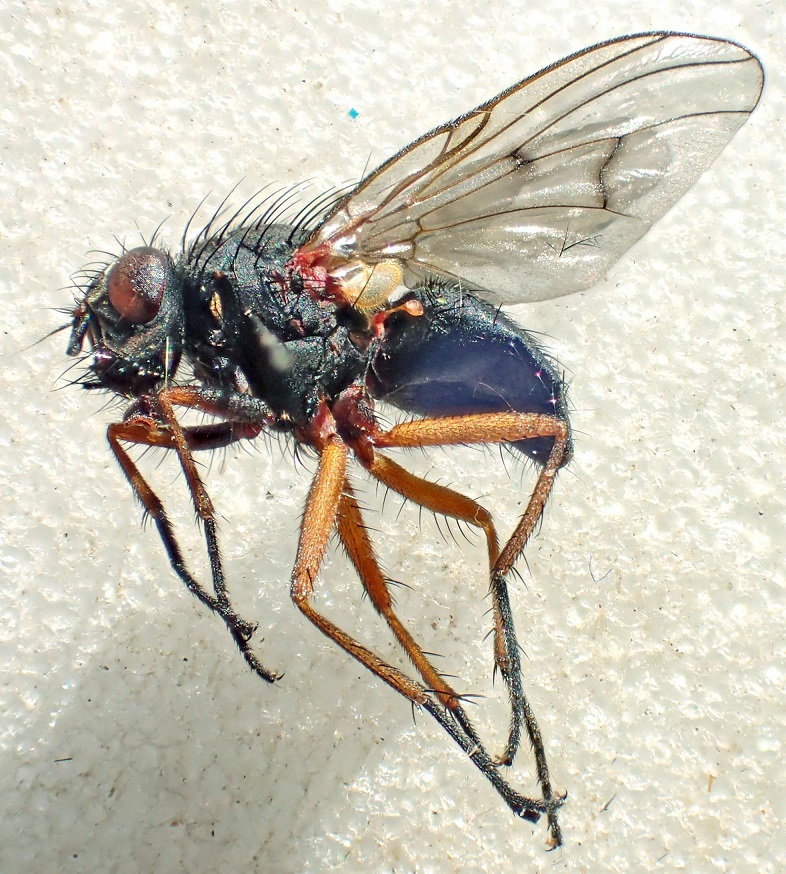Darwyn Sumner's key to Sciomyzidae
Does anybody knows where I can get a copy of Darwyn Sumner's key?
Help with identifications, field craft and other topics relating to Diptera
Does anybody knows where I can get a copy of Darwyn Sumner's key?
I've got completely stuck with this acalypterate fly. It has stout fore femora and a longish proboscis that folds back on itself. The palps look quite distinctive as well. Two costal breaks. Caught in a flight interception trap in an old damson orchard in Buckinghamshire in July 2019.
Can anyone point me in the direction of a family please?
I've been having difficulties with this specimen, so after several hours feel I should get expert help! The discal cell is reminicent of Dolichopodidae, but it's not metalic and I can't get it to key out satisfactorily. Quite frankly, I suspect it belongs in another family, but I can't work out which.
Total length including wings is about 4 mm. It was swept from Trewalkin Meadow, a wet lowland meadow near Talgarth, Breconshire, on 25-7-2018.
I think this one keys out to Calliopum geniculatum in Mark Mitchell's Lauxaniid key of 2012. I'd be glad to be corrected.

This lady keys out to Xanthandrus comptus, but has all yellow legs (barring only the hind metatarsus). Otherwise the match is sound - elongated stigma, tergites 3 and 4 with square abdominal spots touching the front and edges of the segments, black scutellum). But the legs are exceptionally yellow. Any ideas?
Hello,
I hope a muscid enthusiast can help with this identification. The nearest I can get with the Fonseca keys is Helina lasiophthalma, but I am not convinced. A notable feature is the reddish tip to the scutellum. Length 7.0 mm. It was caught at a lit window on 31 Oct last year in SW Worcestershire (SO777339).
Martin Skirrow ('Screw')
I would like to place this fly in a family, but it has developed a nice coating of fungus that obscures much of the head and thorax and I can't get anywhere with it though the venation seems extreme and the antennae long ... I can't see if occeli are there or not, nor decide if there is a discal cell which doesn't help! Any clues to point me in the right direction? Thanks, Donald
This robust sized leftovers of fly - a Muscid (I think - no hypopleural bristles) was in a sample collected from a conservatory last summer. I don't think there is much chance of putting a name to it, but the crossvein Dm-Cu is rather unusual in its shape. Does this point to any species? I have not seen it before.